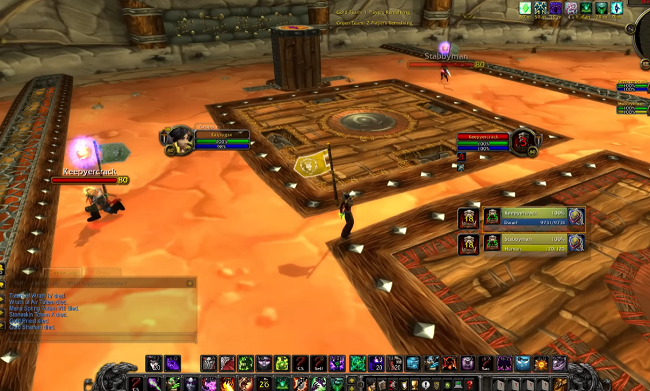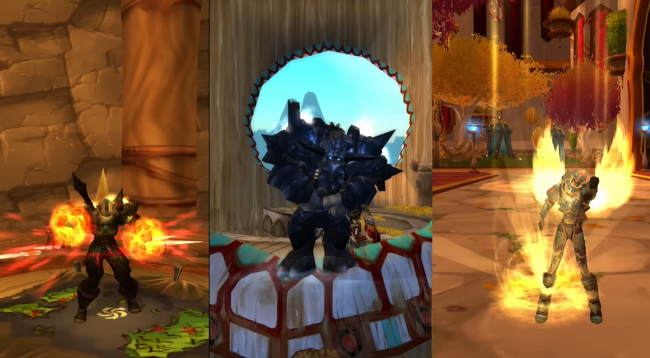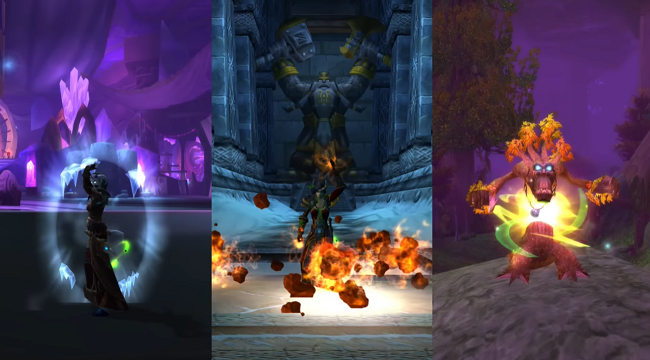Best WotLK PvP Arena Comp Guide - Top 4 Ways To Make An Arena Comp Powerful In Wrath of the Lich King
In this WotLK PvP arena comp guide, we are going to be going over what makes an arena comp powerful in Wrath of the Lich King. There are many different factors that make a team composition good or bad for arena, however, we are going to be simplifying everything down to 4 things, pressure, synergy, crowd control and survivability. A very strong comp will have all four of these things, but you don't necessarily need all four to make something work.
Wrath of the Lich King Classic PvP Arena Comp Guide
Pressure
This is simply applying damage to a target, potentially creating a kill window. Many comps create pressure in different ways, for example, turbo cleave creates pressure by purging off all of the buffs on the kill target while doing a ton of damage in tandem with mortal strike and when shearing the healer. Since all three of those things generate so much pressure, they rarely need cc to actually land a kill. There are also teams that rely more heavily on cc than damage to land to kill, these are often spell cleaves like mage lock shaman. Since this team has so much crowd control, it is very common that you will see a spellcleave controlling the entire enemy team while looking for a good target to hit that is out of position. While both of these teams have very different play styles, they both end up generating the same result which is a lot of pressure on the kill target and a chance to land a kill. If a team can't generate any pressure, then it's very unlikely that they're going to be landing a kill, therefore making it a bad team composition. There are also multiple different ways that damage is distributed depending on what teammates you have, this is important to be aware of for many reasons.
Let's say that you are planning to play a retribution paladin, this spec has a large amount of utility for their team on top of some decent sustained damage and a very high amount of burst while also not having a ton of cc. This makes them pair well with any class who also shares a high amount of burst and would do even better if that class also offered some cc making marksmanship hunter a great choice for them. On top of the hunter having a ton of bursts and a ton of cc, they also have a 50% healing reduction with their aim shot making them pair even better. On the other hand, if we took a retribution paladin and partnered them with an affliction warlock, that combo wouldn't have as great synergy as the hunter seeing as the affliction warlock's playstyle revolves around rotting the enemy team to death while not having very much burst to land a kill. The warlock of tauros does offer some crowd control, so you could make this work if you wanted to. However, it wouldn't be a super strong pairing since the classes don't synergize together.
Synergy
While your teammates do need synergy to be effective, this is referring to the way that classes synergize and distribute damage. A classic example of great synergy is rogue mage, both of these classes have extremely high targeted burst damage on top of having a ton of crowd control that doesn't dr with each other. This allows them to almost infinitely reset and burst targets into stun lock over and over until they finally land a kill. Synergy is an extremely important factor when creating atm composition.
Another very important factor to synergy is diminishing returns or dr's. If you have two classes that share a lot of dr's with each other, it can pose a big problem. For example, a disciplined priest's main form of cc is their psychic stream. If paired with a warlock whose main form of cc is also fear, it reduces the value of that priest having that cc whereas if you paired that priest with a feral druid, you would add cyclone, bash and entangling roots, all which do not dr with the pre-cc.
Crowd Control
CC is an invaluable tool for both playing offensively and defensively. Some comps have minimal amounts of cc and some comps have tons of it. An important thing to keep in mind is that crowd control only matters when you are applying pressure by dealing damage. For example, you have a bunch of cc and you use all of it on the enemy team while dealing no damage, you are actually putting yourself behind seeing as there's no damage going out and you are now putting them on dr faster giving you zero pressure completely making your cc useless. So it is always important to partner your cc with damage.

Certain comps rely exclusively on cc to land kills like mls, lsp, rmp, etc, whereas other comps rely on almost no crowd control to land kills like tsg, turbo cleave, beast cleave, etc,. Both of these play styles are very strong when used directly, however, utilizing even the smallest amount of cc at the right time is guaranteed to win you a game even for a melee cleave.
Survivability
The final thing to consider when making a composition is survivability. This is a very obvious factor, however, this doesn't just mean lots of heals. Crowd control also offers a ton of survivability seeing as if the enemy dps can't deal any damage, then they aren't going to kill anything. On top of that, having a dps that could dispel magic like a rep paladin gives your team a lot more survivability as they can dispel their healer out of cc's. How much utility and crowd control a team has will affect how offensively or defensively they can effectively play.

Let's take a look at a melee cleave like tsg for example, this comp has some defensives and the holy paladin has a lot of healing. However, the only way that this team can generate any pressure is by running a target down and beating it to death. If they aren't connected to a target and they are forced to go defensive, they effectively have almost zero pressure and in many scenarios, once a melee cleave is forced to go defensive and hide on a pillar, it is very hard for them to recover as they are just gonna get picked apart by the other team since they don't have any threat of landing a kill by line of sighting on a pillar.

On the other hand, let's look at a comp like mld or magelock druid. This top technically has an unlimited cc chain with fear, polymorph, cyclone and roots. Since they have these abilities ready at any time, they are able to utilize them whether they need to play defensively or offensively. This gives them a lot more versatility than a melee cleave would have as they're going to be able to recover from a lot of scenarios where they usually would die by simply removing the enemy team off of them until they recover and then get back on the offensive. These types of comps are very hard to play as all three players need to be playing very fast and abusing the trinkets of the enemy team in order to make this comp work.
Conclusion
Whenever you are considering or asking yourself would this team composition work, it is very important to consider these 4 things, you could even take them and apply these four things to any comp in the game and if they have all four things, then it's very likely that comp could definitely do well. Just because a team doesn't have all four doesn't necessarily mean that it's not viable, it just means that you will have to play around your strengths and not your weaknesses.
- D2R Season 13 Start Date - Diablo 2 Resurrected Ladder Reset 2026
- ACNH December Update 2025: Toy Day, Events, Items, DIYs, Critters, Birthdays
- Diablo 4 Season 11 Leveling Guide - Best 1-60 Leveling Strategies & Routes
- Diablo 4 Paladin Leveling Skills & Build Strategy (Season 11)
- Elden Ring Nightreign Scholar Best Weapons, Relics & Build Guide





 Google Safe
Google Safe
 Live Chat
Live Chat
 0
0
